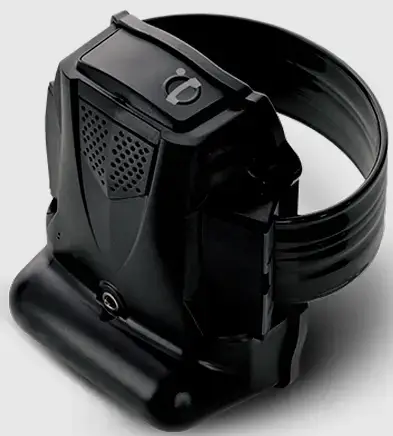

SENTINEL Ankle Monitor Placement

SCOPE
This procedure details the methods and responsibilities for Sentinel Staff to properly install an electronic monitoring bracelet (RF/GPS/Alcohol) on a participant’s ankle. When installing a bracelet on a participant, Sentinel Staff are responsible for following the instructions mentioned in this procedure to ensure that participants are properly and reliably monitored.
PROCEDURE
- Bare Skin: Install the bracelet on bare skin. If the participant is wearing socks, instruct the participant to lower the sock so the ankle is exposed.
- Ankle Rotations and Tap test: Instruct the participant to perform ankle rotations followed by the tap test.
- CAUTION: Ankle rotations and tap test are critical to avoid installing the bracelet on a prosthetic leg, which can be removed.
- Instruct the participant to place their heel on the floor. With the toes pointing up in the air, request for the participant to rotate his foot at the ankle.
- With the heel on the floor, request for the participant to also tap their toes up and down to the floor a few times.
- Only install the bracelet on the leg that can perform ankle rotations with the toes pointing in the air followed by the tap test.
- If unable to install the bracelet on bare skin and the participant is unable to successfully perform ankle rotations and the tap test on EITHER LEG, the participant is not eligible to be placed on the program. Notify the supervising officer or a representative of the agency advising them of the prosthetic condition.
- Ankle and Heel Inspection: Inspect the participant’s ankle. If the participant does not have a definable ankle bone or heel bone to prevent device removal, inform your direct supervisor BEFORE proceeding.
- CAUTION: The lack of ankle and heel definition may make it easier for the participant to slip the bracelet off their foot.
- Proceed with fitting and installing the bracelet on the participant’s ankle as snug and secure as possible.
- Take a picture of the ankle and device following the installation and attach it to the field contact entry.
- Notify the supervising officer or a representative of the agency outlining Sentinel’s caution while adhering to the order of the referring agency.
- Wrist Installations: If ANY agency personnel or court require, mandate, or order Sentinel staff or sites to install an RF or GPS device on the wrist (or any other body part aside from a skin and bone ankle), inform your direct supervisor BEFORE proceeding.
- CAUTION: The flexibility of the hand joints may make it easier to remove the bracelet when installed on the wrist. Installation on the wrist should be considered only as a last resort.
- Proceed with fitting and installing the bracelet as snug and secure as possible.
- Notify the supervising officer or a representative of the agency outlining Sentinel’s caution while adhering to the order of the referring agency.
- Field Contact: Following the installation, complete a Field Contact entry on the SentinelDNA Mobile App or SentinelDNA software. A Field Contact entry is required on EVERY serialized device at EVERY interaction with a participant. Refer to SOP Sentinel Field Contact Requirements.
- Charging Instructions: Once the bracelet has been installed, physically demonstrate for the participant how to plug in and remove the charger from the device and wall outlet. This is especially important for participants to understand how to charge the device and to prevent charging issues.